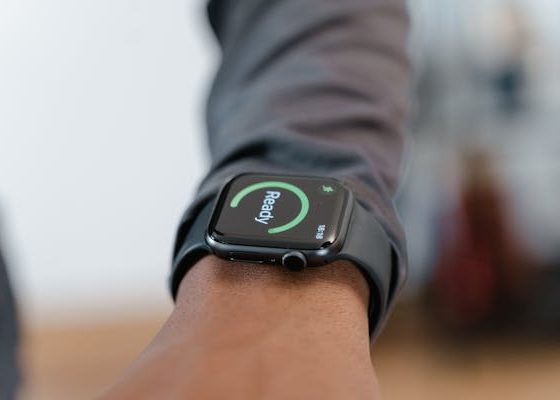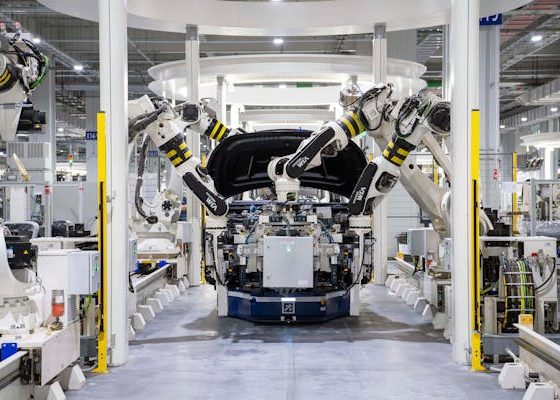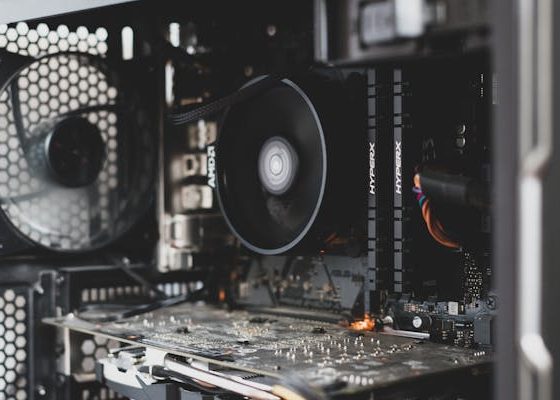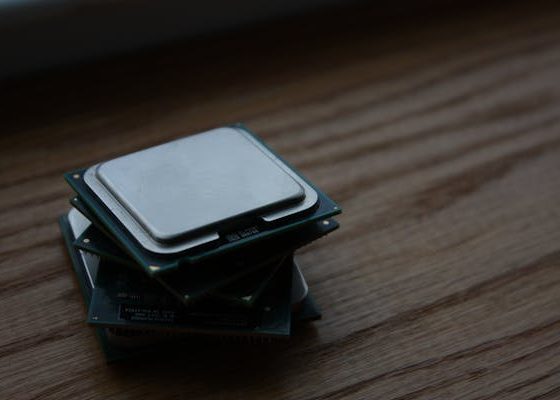The world of robotics has taken a giant leap forward with the introduction of Tesla’s Optimus robot, a groundbreaking humanoid that is poised to revolutionize industries and redefine human-robot interaction. Since its unveiling, the Optimus robot has captured the imagination of tech enthusiasts, investors, and futurists alike. This 5’8″ robot, resembling a human both in form and functionality, symbolizes the next phase of automation and artificial intelligence (AI) integration. But what exactly is Tesla’s Optimus robot, and how might it change the world as we know it?

We will dive into the details of Tesla’s Optimus robot—its capabilities, design, potential applications, and the broader implications for industries ranging from manufacturing to healthcare. As we move forward, it’s crucial to understand how Tesla’s Optimus robot fits within Elon Musk’s broader vision of AI, sustainability, and human life augmentation.
Tesla’s Vision for Robotics
Tesla, renowned for its electric vehicles (EVs), energy products, and Autopilot self-driving technology, has now expanded its mission to encompass more than transportation and renewable energy. Tesla’s Optimus robot signifies the company’s ambitious foray into the world of general-purpose robotics. At Tesla’s AI Day event in 2021, CEO Elon Musk introduced the robot as an extension of Tesla’s AI expertise, developed initially for self-driving cars. Musk explained that the robot would be designed to perform mundane, repetitive, or even dangerous tasks, freeing up human labor for more creative and strategic pursuits.
According to Musk, the overarching goal of Tesla’s Optimus robot is to eliminate “dangerous, repetitive, and boring tasks” in both industrial and domestic settings. He envisions a future where robots like Optimus serve not only in factories but also in homes, performing everyday tasks such as cooking, cleaning, and running errands. This vision is deeply rooted in Musk’s belief that AI and robotics are integral to solving the labor shortages and inefficiencies that plague industries worldwide.
Key Features of Tesla’s Optimus Robot
Design and Specifications
Tesla’s Optimus robot is designed to be physically analogous to humans. Standing at 5’8” and weighing around 125 pounds, it is capable of carrying up to 45 pounds and walking at a speed of 5 miles per hour. This humanoid design is intentional, as it allows Optimus to function in environments designed for human workers without the need for extensive modifications. Its human-like proportions enable it to perform tasks such as picking up objects, operating machinery, or even assisting in lifting heavy loads.
The robot is powered by the same AI used in Tesla’s self-driving vehicles, making use of advanced computer vision, real-time decision-making, and neural networks. Tesla’s full suite of AI tools has been repurposed to allow the Optimus robot to navigate its environment, recognize objects, and interact with people and machines. It is equipped with numerous sensors, including cameras, gyroscopes, and accelerometers, which allow for precise movement and balance. Additionally, the robot’s internal computing systems are designed to process massive amounts of data quickly, enabling real-time decision-making.
Autonomy and Safety
One of the most important features of Tesla’s Optimus robot is its autonomy. While it can be programmed for specific tasks, Optimus is designed to be semi-autonomous, capable of learning from its environment and adjusting its behavior in real-time. This learning ability is key to its versatility, as it can be deployed across a wide variety of applications without the need for extensive reprogramming or human intervention.
Safety is another major concern when it comes to robotics, especially those that interact closely with humans. Tesla has taken great care to ensure that Optimus operates safely around people. It is equipped with failsafe mechanisms to prevent accidents, such as built-in sensors that detect proximity to objects and people. If a person gets too close, Optimus is designed to stop immediately to avoid any harm. Furthermore, Tesla claims that the robot will be “friendly” and is being developed to understand and respond to voice commands, making it intuitive to use even for individuals without technical expertise.
AI Integration
The AI that powers Tesla’s Optimus robot is derived from Tesla’s existing innovations in self-driving cars. Tesla has already demonstrated its prowess in AI with its Full Self-Driving (FSD) feature, which uses neural networks to interpret visual data and make driving decisions in real-time. By leveraging this existing AI infrastructure, Tesla aims to create a robot that can “see” and interpret the world around it in a manner similar to how Tesla vehicles navigate roads.
Optimus will use Tesla’s Dojo supercomputer to process vast amounts of data. Dojo is a high-performance neural network training computer, built to train AI models on a massive scale. For the Tesla Optimus robot, this means its AI capabilities are continually improving as the robot learns from its environment and the tasks it performs. This dynamic learning process enables the robot to handle a wide array of challenges, from intricate tasks on assembly lines to complex interactions in a household setting.
Potential Applications
Industrial and Manufacturing Sector
The first significant area where Tesla’s Optimus robot is likely to make an impact is the industrial and manufacturing sector. Factories, warehouses, and distribution centers have long sought to automate repetitive tasks to increase efficiency and reduce labor costs. While industrial robots have been in use for decades, they are often highly specialized and limited to performing specific, pre-programmed tasks in controlled environments.
Tesla’s Optimus robot, however, represents a new breed of robots capable of flexibility and adaptability. Unlike traditional industrial robots that are stationary or require heavy machinery to function, Optimus can move freely within a facility, performing a variety of tasks. Its human-like structure allows it to operate machinery, transport goods, and even work alongside human employees, adapting its capabilities as needed.
In this context, Tesla’s Optimus robot could revolutionize supply chain logistics, production line automation, and inventory management. Given its semi-autonomous nature, it could be deployed across multiple sites, learning the specifics of each facility and adjusting its behavior accordingly. This flexibility could help companies address labor shortages, improve productivity, and reduce workplace injuries, particularly in hazardous environments.
Healthcare and Caregiving
Beyond the factory floor, Tesla’s Optimus robot holds immense potential in the healthcare and caregiving industries. With an aging global population and a growing shortage of healthcare workers, robotic assistance is increasingly being looked to as a solution to fill gaps in care. While healthcare robots have traditionally been designed for specific tasks, such as surgical assistance or patient monitoring, Optimus could take on a wider range of responsibilities.
For example, Tesla’s Optimus robot could assist in elderly care, helping with daily activities such as bathing, dressing, or moving from one place to another. Its ability to safely handle objects and interact with people in real-time makes it well-suited for such tasks. Moreover, because Optimus can learn from its environment, it could adapt to the individual needs of patients, providing personalized care without requiring constant human supervision.
In hospitals, Tesla’s Optimus robot could be deployed to transport medical supplies, assist nurses and doctors in administrative tasks, or even act as a first responder in emergencies. By taking on these routine and often time-consuming responsibilities, Optimus could free up healthcare professionals to focus on more critical, patient-centered tasks.
Domestic Use
Elon Musk has also hinted at Tesla’s Optimus robot becoming a regular feature in homes, performing tasks that range from cleaning to grocery shopping. Imagine a robot that not only vacuums the floor but can also load the dishwasher, take out the trash, or even prepare a meal. Tesla’s Optimus robot could serve as a personal assistant, helping with mundane chores while you focus on more important aspects of life.
Optimus could revolutionize the concept of a “smart home” by becoming its central operating system. Instead of controlling devices remotely through apps or voice commands, homeowners could rely on Tesla’s Optimus robot to manage their home environment autonomously. Whether it’s adjusting the thermostat, locking doors, or setting up security cameras, Optimus could be the ultimate smart home companion.
The potential for domestic use doesn’t stop at everyday chores. Optimus could also be used to assist individuals with disabilities, allowing them to live more independently by performing tasks that would otherwise require human assistance.
Ethical Considerations and Challenges
While the prospect of Tesla’s Optimus robot transforming various sectors is exciting, it also raises important ethical considerations. The introduction of humanoid robots into the workforce could potentially lead to job displacement, particularly in industries where manual labor is prevalent. As robots like Optimus take on more responsibilities, what happens to the workers whose jobs are being automated?
Tesla and Musk argue that the rise of robotics will not necessarily lead to unemployment but will instead create new opportunities in tech, AI development, and robot maintenance. However, critics argue that there needs to be a more robust plan for reskilling workers whose jobs will be impacted by this wave of automation.
Another ethical issue involves the security and privacy of data collected by Tesla’s Optimus robot. Given that the robot will be constantly learning from its environment, it will gather significant amounts of data, particularly in domestic and healthcare settings. Ensuring that this data is handled securely and ethically will be paramount.
The Future of Tesla’s Optimus Robot
Looking ahead, it’s clear that Tesla’s Optimus robot is more than just a technological curiosity—it’s a potential game-changer for how humans and machines interact. With its advanced AI, versatile design, and a wide array of potential applications, Optimus could become a fixture in both industrial and domestic settings within the next decade.
While much of the robot’s future depends on continued advancements in AI and robotics, Tesla’s track record of innovation suggests that the company is well-positioned to overcome the challenges that lie ahead. Whether it’s in factories, hospitals, or homes, Tesla’s Optimus robot has the potential to redefine the boundaries of human potential, freeing us from mundane tasks and opening up new possibilities for innovation and creativity.
Conclusion
Tesla’s Optimus robot represents a monumental shift in the robotics landscape. Its advanced capabilities, human-like form, and integration of AI technology make it a versatile tool for a variety of industries. As the world embraces the future of automation, Tesla’s Optimus robot stands at the forefront of this exciting new era, offering a glimpse into a world where robots and humans work side by side to achieve greater efficiency, safety, and creativity. The road ahead is undoubtedly challenging, but with Tesla’s Optimus robot, the future of robotics looks brighter than ever.














